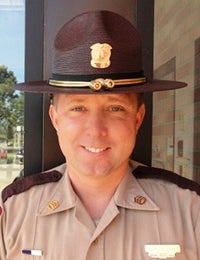Ask a Trooper: Is it safe to place gas cans on extended carriers behind vehicles?
Published 8:40 pm Friday, July 29, 2022
|
Getting your Trinity Audio player ready...
|
Ask a Trooper by Troy Christianson
Question: I see vehicles go by with extended carriers attached to their hitch with several full gas cans. We discuss what could happen if a driver was not paying attention and ran into one such vehicle. How safe can this be? Is there any laws in place that makes this unlawful?
Answer: There is no law against transporting fuel containers on an extended carrier for non-commercial vehicles, although I agree that it could be a very dangerous situation in the case of a crash.
Vehicle fires tend to burn quickly when ignited by an outside source, electrical problem or engine fire. I have investigated rear-end collisions in which the fuel tank was ruptured and gasoline was dispersed at the scene, making it a very dangerous situation. Newer vehicles are designed to keep the fuel from leaking out of the gas tank in the event of a crash by placing the tank in the safest location possible on the vehicle.
Gas cans/tanks that are placed on a cargo type carrier on the rear of a vehicle have little to no protection if they are struck by another vehicle. If this occurs, fuel will most likely spill out of the tanks and potentially cause a fire to both vehicles.
There are laws that pertain to an extended carrier:
• The carrier and cargo must not block the view of the taillights and license plate.
• The external cargo carrier must not extend more than four feet beyond the bed or body of the vehicle. It must have a red, yellow or orange flag or cloth not less than 16 inches square.
• If the external cargo carrier extends more than four feet beyond the bed or body of the vehicle, an additional rear light(s) is required.
It is important to mention that that there is a law against hauling anything that extends beyond the line of the fenders on the driver’s side and extends more than six inches beyond the line of the fenders on the passenger’s side.
Remember to always secure any load on a vehicle. The load must be tied or strapped down so it will not shift and fall onto the roadway.
Please place items like gas cans in an area where they have some protection if a crash would occur.
You can avoid a ticket — and a crash — if you simply buckle up, drive at safe speeds, pay attention and always drive sober. Help us drive Minnesota toward zero deaths.
A portion of state statutes were used with permission from the Office of the Revisor of Statutes. If you have any questions concerning traffic-related laws or issues in Minnesota, send your questions to Sgt. Troy Christianson, Minnesota State Patrol, at 2900 48th St. NW, Rochester MN 55901-5848.


